
Intel Celeron G3950 Benchmark, test et spécifications
Dernière mise à jour:
Le Intel Celeron G3950 est un processeur principal 2. Il peut gérer 2 threads simultanément et a été introduit en Q1/2017. Il est basé sur le 6. Gen de la série Intel Celeron et nécessite une carte mère avec le socket LGA 1151. Le Intel Celeron G3950 marque 777 points avec un cœur de processeur dans le benchmark Geekbench 5. Lorsque vous utilisez tous les cœurs de processeur, le résultat est de 1,470 points.
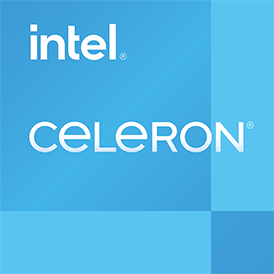
| Nom: | Intel Celeron G3950 |
|---|---|
| Famille: | Intel Celeron (165) |
| Groupe de processeurs: | Intel Celeron G3000 6. Gen. (6) |
| Architecture: | Skylake S |
| Segment: | Desktop / Server |
| Génération: | 6 |
| Prédécesseur: | -- |
| Successeur: | -- |
Cœurs de processeur et fréquence de base
Les cœurs de processeur 2 de l'horloge Intel Celeron G3950 avec 3.00 GHz. Le nombre de cœurs de processeur et la fréquence d'horloge du processeur sont en grande partie responsables des performances globales.
| CPU Cores / Threads: | 2 / 2 |
|---|---|
| Architecture de base: | normal |
| Cores: | 2x |
| Hyperthreading / SMT: | Non |
|---|---|
| Overclocking: | Non |
| La fréquence: | 3.00 GHz |
| Turbo La fréquence (1 Core): | -- |
| Turbo La fréquence (2 Cores): | -- |
Graphiques internes
Avec le Intel HD Graphics 610, le Intel Celeron G3950 a des graphiques intégrés. Cela a 12 processeurs SM, qui ont un total de 96 shaders de texture. L'iGPU permet non seulement les jeux, mais accélère également considérablement la lecture vidéo, par exemple.
| Nom du GPU: | Intel HD Graphics 610 |
|---|---|
| Fréquence GPU: | 0.35 GHz |
| GPU (Turbo): | 1.05 GHz |
| Unités d'exécution: | 12 |
| Shader: | 96 |
| Hardware Raytracing: | Non |
| Date de sortie: | Q3/2016 |
| Max. affiche: | 3 |
|---|---|
| Generation: | 9.5 |
| Direct X: | 12 |
| La technologie: | 14 nm |
| Max. GPU Mémoire: | 32 Go |
| Frame Generation: | Non |
Prise en charge du codec matériel
Les processeurs dotés de graphiques intégrés peuvent traiter et lire des vidéos plus rapidement et plus efficacement. Cela peut avoir un effet positif sur la durée de vie de la batterie des ordinateurs portables, par exemple.
| h265 / HEVC (8 bit): | Décoder / Encoder |
|---|---|
| h265 / HEVC (10 bit): | Décoder / Encoder |
| h264: | Décoder / Encoder |
| VP8: | Décoder / Encoder |
| VP9: | Décoder / Encoder |
| AV1: | Non |
|---|---|
| AVC: | Décoder / Encoder |
| VC-1: | Décoder |
| JPEG: | Décoder / Encoder |
Mémoire & PCIeLe Intel Celeron G3950 prend en charge jusqu'à 64 Go mémoire dans jusqu'à 2 (Dual Channel) canaux de mémoire. Cela se traduit par une bande passante mémoire maximale de 34.1 Go/s. |
|
| Type de mémoire: | Bande passante mémoire: |
|---|---|
| DDR4-2133 DDR3L-1600 | 34.1 Go/s 25.6 Go/s |
| Max. Mémoire: | 64 Go |
| Canaux de mémoire: | 2 (Dual Channel) |
| ECC: | Oui |
| PCIe: | 3.0 x 16 |
| PCIe Bande passante: | 15.8 Go/s |
Gestion thermaleAvec le TDP, le fabricant du processeur spécifie la solution de refroidissement requise pour le processeur. Le Intel Celeron G3950 a un TDP de 51 W. |
|
|---|---|
| TDP (PL1 / PBP): | 51 W |
| TDP (PL2): | -- |
| TDP up: | -- |
| TDP down: | -- |
| Tjunction max.: | 100 °C |
Détails techniques
Le Intel Celeron G3950 a un grand cache 2.00 MB. Le processeur est fabriqué en 14 nm. La production moderne augmente l'efficacité du transformateur.
| La technologie: | 14 nm |
|---|---|
| Conception de puce: | Monolithique |
| Socket: | LGA 1151 |
| L2-Cache: | -- |
| L3-Cache: | 2.00 MB |
| AES-NI: | Oui |
| Systèmes d'exploitation: | Windows 10, Linux |
| La virtualisation: | VT-x, VT-x EPT, VT-d |
|---|---|
| Jeu d'instructions (ISA): | x86-64 (64 bit) |
| Extensions ISA: | SSE4.1, SSE4.2 |
| Date de sortie: | Q1/2017 |
| Prix de sortie: | 49 $ |
| Numéro d'article: | -- |
| Documents: | Fiche technique |
Notez ce processeur
Résultats de référence

Les résultats du benchmark pour le Intel Celeron G3950 ont été soigneusement vérifiés par nos soins. Nous publions uniquement les résultats de référence qui ont été créés par nous ou qui ont été soumis par un visiteur puis vérifiés par un membre de l'équipe. Tous les résultats sont basés sur et remplissent nos directives de référence.
Geekbench 5, 64bit (Single-Core)
Geekbench 5 est un benchmark multi-plateformes qui utilise beaucoup la mémoire système. Une mémoire rapide va beaucoup pousser le résultat. Le test monocœur utilise un seul cœur de processeur, la quantité de cœurs ou la capacité d’hyperthreading ne comptent pas.
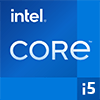
|
Intel Core i5-4670T
4C 4T @ 3.30 GHz |
||

|
Intel Core i5-6267U
2C 4T @ 3.30 GHz |
||
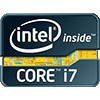
|
Intel Core i7-3930K
6C 12T @ 3.80 GHz |
||
|
|
Intel Celeron G3950
2C 2T @ 3.00 GHz |
||

|
Apple A10 Fusion
4C 4T @ 2.34 GHz |
||

|
Intel Core i5-7400T
4C 4T @ 3.00 GHz |
||

|
MediaTek Dimensity 1000+
8C 8T @ 2.60 GHz |
||
Geekbench 5, 64bit (Multi-Core)
Geekbench 5 est un benchmark multi-plateformes qui utilise beaucoup la mémoire système. Une mémoire rapide va beaucoup pousser le résultat. Le test multicœur concerne tous les cœurs de processeur et procure un avantage considérable de l'hyperthreading.
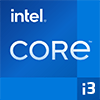
|
Intel Core i3-6157U
2C 4T @ 2.40 GHz |
||

|
AMD Phenom II X4 840
4C 4T @ 3.20 GHz |
||

|
Intel Core i5-5300U
2C 4T @ 2.70 GHz |
||
|
|
Intel Celeron G3950
2C 2T @ 3.00 GHz |
||

|
AMD Athlon II X4 651K
4C 4T @ 3.00 GHz |
||

|
AMD Athlon II X4 651
4C 4T @ 3.00 GHz |
||
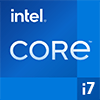
|
Intel Core i7-4650U
2C 4T @ 2.90 GHz |
||
iGPU - FP32 Performance (GFLOPS simple précision)
Les performances de calcul théoriques de l'unité graphique interne du processeur avec une précision simple (32 bits) dans GFLOPS. GFLOPS indique combien de milliards d'opérations en virgule flottante l'iGPU peut effectuer par seconde.

|
Intel Celeron G3930
Intel HD Graphics 610 @ 1.05 GHz |
||

|
Intel Pentium G4560
Intel HD Graphics 610 @ 1.05 GHz |
||

|
Intel Pentium G4560T
Intel HD Graphics 610 @ 1.05 GHz |
||
|
|
Intel Celeron G3950
Intel HD Graphics 610 @ 1.05 GHz |
||

|
Intel Celeron N6210
Intel UHD Graphics 10th Gen (16 EU) @ 0.75 GHz |
||

|
Intel Celeron N6211
Intel UHD Graphics 10th Gen (16 EU) @ 0.75 GHz |
||
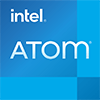
|
Intel Atom x6211E
Intel UHD Graphics 10th Gen (16 EU) @ 0.75 GHz |
||
Résultats estimés pour PassMark CPU Mark
Certains des processeurs listés ci-dessous ont été référencés par CPU-monkey. Cependant, la majorité des processeurs n’ont pas été testés et les résultats ont été estimés à l’aide d’une formule propriétaire secrète du CPU-singe. En tant que tels, ils ne reflètent pas avec précision les valeurs de la marque de processeur Passmark et ne sont pas approuvés par PassMark Software Pty Ltd.

|
Intel Atom C3558
4C 4T @ 2.20 GHz |
||
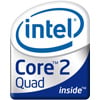
|
Intel Core 2 Quad Q9650
4C 4T @ 3.00 GHz |
||

|
Intel Core i5-2390T
2C 4T @ 2.70 GHz |
||
|
|
Intel Celeron G3950
2C 2T @ 3.00 GHz |
||

|
AMD Phenom II X3 700e
3C 3T @ 2.40 GHz |
||
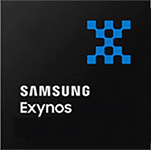
|
Samsung Exynos 9611
8C 8T @ 2.30 GHz |
||

|
AMD A6-6400K
2C 2T @ 4.10 GHz |
||
Cinebench R15 (Single-Core)
Cinebench R15 est le successeur de Cinebench 11.5 et est également basé sur la suite Cinema 4. Cinema 4 est un logiciel utilisé dans le monde entier pour créer des formulaires 3D. Le test monocœur utilise un seul cœur de processeur, la quantité de cœurs ou la capacité d’hyperthreading ne comptent pas.

|
Intel Core i5-4440
4C 4T @ 3.30 GHz |
||

|
Intel Core i5-4670T
4C 4T @ 3.30 GHz |
||

|
Intel Core i7-2600K
4C 8T @ 3.80 GHz |
||
|
|
Intel Celeron G3950
2C 2T @ 3.00 GHz |
||

|
Intel Xeon E3-1270
4C 8T @ 3.80 GHz |
||
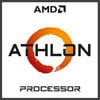
|
AMD Athlon 200GE
2C 4T @ 3.20 GHz |
||

|
Intel Core i7-7Y75
2C 4T @ 3.30 GHz |
||
Cinebench R15 (Multi-Core)
Cinebench R15 est le successeur de Cinebench 11.5 et est également basé sur la suite Cinema 4. Cinema 4 est un logiciel utilisé dans le monde entier pour créer des formulaires 3D. Le test multicœur concerne tous les cœurs de processeur et procure un avantage considérable de l'hyperthreading.

|
Intel Core i5-4200U
2C 4T @ 2.30 GHz |
||

|
Intel Core i5-4250U
2C 4T @ 2.60 GHz |
||

|
Intel Pentium Gold 4417U
2C 4T @ 2.30 GHz |
||
|
|
Intel Celeron G3950
2C 2T @ 3.00 GHz |
||

|
Intel Pentium G4500T
2C 2T @ 3.00 GHz |
||

|
Intel Core M-5Y71
2C 4T @ 2.20 GHz |
||

|
AMD Phenom II X3 B75
3C 3T @ 3.00 GHz |
||
Benchmarks

Geekbench 5 (SC)
2,488 entrées
2,488 entrées

Geekbench 5 (MC)
2,461 entrées
2,461 entrées

FP32 SP (iGPU)
2,026 entrées
2,026 entrées

PassMark CPU-Mark
2,391 entrées
2,391 entrées

Cinebench R15 (SC)
1,106 entrées
1,106 entrées

Cinebench R15 (MC)
1,101 entrées
1,101 entrées

Geekbench 3 (SC)
942 entrées
942 entrées

Geekbench 3 (MC)
938 entrées
938 entrées

Cinebench R11.5 (SC)
825 entrées
825 entrées

Cinebench R11.5 (MC)
836 entrées
836 entrées

Cinebench R11.5 iGPU
383 entrées
383 entrées
Comparaisons populaires
retour à l'index




